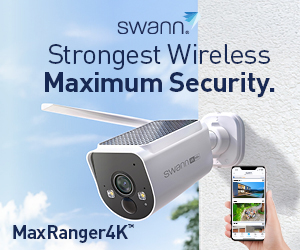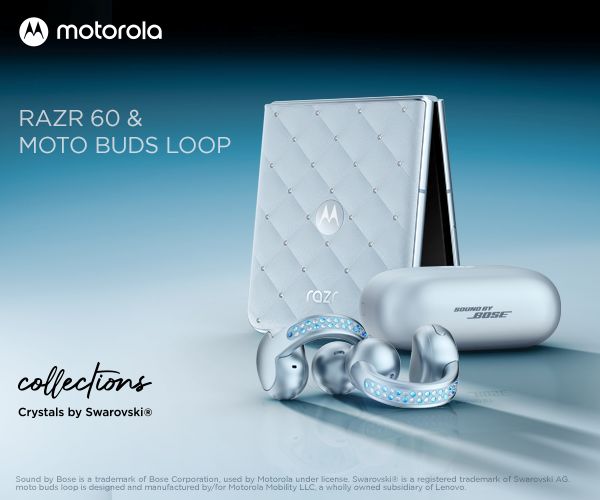The ASUS Zenfone 11 Ultra is a flagship-class phone with a Qualcomm SD3 Gen 3, AMOLED screen and many go-fast goodies. Regrettably, there are a few missteps that could have made this great.
I am writing this review almost immediately after the ASUS ROG Phone 8 Pro – gamers’ nirvana and now a flagship smartphone (let’s call that ROG) that does everything right, easily knocking the Samsung Galaxy S24 Ultra off its perch (let’s call that S24U). Frankly, it is the best Australian availability SD8 Gen 3 smartphone of 2024.
So, I was anticipating that this (let’s call it Zen) might be a wolf in sheep’s clothing. However, several things prevent it from achieving flagship status.
- The screen is the same size as the 10-bit, 1.07 billion-colour ROG, but this is an 8-bit, 16.7 million-colour AMOLED screen. This has two impacts. First, video and still image previews are not as accurate—what you see is not what you get. Second, HDR10+ content suffers from colour gradient bands. Read 8-bit versus 10-bit screen colours. What is the big deal?
- The USB-C port is 2.0 480Mbps, supporting OTG cut and paste only. The ROG has a USB-C 3.2 Gen 2 10Gbps port supporting audio/video/data/charge/Alt DP 1.4. That means you can mount an external SSD at gigabit speeds and use USB-C to USB-C or HDMI for screen mirroring and Android desktops.
- Phone reception signal strength is nowhere near the ROG.
I’m sorry, ASUS. You removed the most essential nerdy features, a deal breaker for power users. But don’t despair—the Samsung Galaxy S24 Ultra only has an 8-bit screen, USB-C 2.0 and average phone signal strength.
Reviewer’s Note: ASUS Zenfone 11 Ultra
ASUS provided us with a UK 16GB/512GB version, a model unavailable in our region. While they may have had good intentions, the fact that the latest patch is from December 2023 (with the launch in April 2024) raises concerns. We suspect many of the tests, including phone signal strength, could be influenced by the outdated UK firmware V226, especially when the 30 May 2024 update is V402. This could also explain why Australia was not included in the setup country options.
We have downloaded the firmware and manually updated the phone. We still think that Australian firmware should have been on this device and perhaps would have yielded better results.
Australian Review: ASUS Zenfone 11 Ultra, Dual SIM (as reviewed UK version 16/512GB)
| Brand | ASUS |
| Model | ASUS Zenfone 11 Ultra |
| Model Number | AI2401 |
| RAM/Storage Base | 12/256GB |
| Price base | 1599 |
| Price 2 | As reviewed, the 16/512GB UK version |
| Warranty months | 12 months |
| Tier | Flagship |
| Website | ASUS AU Product Page |
| From | ASUS online and JB Hi-Fi (online) |
| Made in | Not disclosed – either China or Taiwan. |
| Company | Asustek Computer is a Taiwanese company that produces motherboards, graphics cards, optical drives, PDAs, computer monitors, notebook computers, servers, networking products, mobile phones, computer cases, computer components, and computer cooling systems. |
| More | CyberShack ASUS news and reviews CyberShack computer news and reviews |
| Test date | 15-30 May 2024 |
| Ambient temp | 10-20° |
| Release | 45383 |
| Other models not for Australia (Don’t buy) | Only phones purchased from ASUS Online or JB Hi-Fi carry Australian certification for the phone, Wi-Fi bands, and Australian Warranty. Read Don’t buy a grey market smartphone. |
We use Fail (below expectations), Pass (meets expectations) and Exceed (surpasses expectations or is the class leader) against many of the items below. We occasionally give a Pass(able) rating that is not as good as it should be and a Pass ‘+’ rating to show it is good but does not quite make it to Exceed. You can click on most images for an enlargement.
We are also tightening up on grading. From now on, Pass, for example, means meeting expectations for the price bracket. We consider a Pass mark to be 70+/100 with extra points added for class-leading and excellence.

First Impression – Pass+
It is similar to the ASUS ROG Phone 8 Pro in size and weight without the LED and gaming bling. I like a larger phone, and at 163.8×76.8×8.9 mm x 225g, it fits that bill and is lighter than the Samsung S24 Ultra (S24U).
Screen – only 8-bit/16.7m colours – Pass
While the ROG and Zen share the same screen size, they are entirely different. This is 8-bit/16.7m colours with a claimed 1-120Hz refresh (144Hz in Game Genie mode). The bottom line is that photo and video previews are inaccurate—what you see is not what you get. There is evident colour gradient banding when playing HDR content. The only consolation is that the Samsung S24 Ultra also uses this 8-bit screen, and we complained about that on a flagship device.
Summary: A great phone with an average AMOLED screen.
Screen tests
| Size | 6.78″ |
| Type | AMOLED |
| Flat, Curve, 2D, 3D | Flat centre o-hole |
| Resolution | 2400 x 1080 |
| PPI | 388 |
| Ratio | 20:9 |
| Screen to Body % | 88.2% |
| Colours bits | 8-bit/16.7 million colours Optimal Natural Cinematic – DCI-P3 Standard – sRGB Customised |
| Refresh Hz, adaptive | Auto (steps 60 or 120Hz Fixed 60 or 120Hz Game mode fixed 1080p@144Hz ASUS claims that LTPO is capable of 1-120Hz adaptive. Our tests only showed it can get down to 24Hz. |
| Response 120Hz | 720Hz touch rate |
| Nits typical, test | Not specified. Auto brightness full screen (803) |
| Nits max, test | 1600 High Brightness mode Full Screen (1658) 2500 peak brightness HDR 5% screen (2450) |
| Contrast | Infinite |
| sRGB | 100+% |
| DCI-P3 | 97% of 16.7m colours |
| Rec.2020 or other | It cannot be calibrated. |
| Delta E (<4 is excellent) | <1 |
| HDR Level | HDR10/HDR10+/HLG – no Dolby Vision |
| SDR Upscale | No |
| Blue Light Control | Yes |
| PWM if known | PWM 485Hz and uses DC dimming for lower brightness. It should not be an issue for PWM-sensitive users. |
| Daylight readable | Yes |
| Always on Display | Yes |
| Edge display | Yes |
| Accessibility | Usual Android features. |
| DRM | L1 HDR 1080p (Netflix-only SDR) |
| Gaming | Game Genie settings to focus on gaming |
| Screen protection | Gorilla Glass Victus 2 |
| Comment | It is pretty disappointing that this has an 8-bit screen. The colours are not as natural, videos can experience banding, and photo/video image preview is not as accurate. If you want a 10-bit screen, the ASUS ROG Phone 8 Pro is superb. Read 8-bit versus 10-bit screen colours. What is the big deal? |
Processor – Pass+
This is the world’s fastest Android System on a Chip (Soc) and is the same as used in the ROG and S24U (not the S24 or S24 + Exynos SoC).
When tested, it consistently returned higher benchmarks than the S24U. To be fair to Samsung, we will retest its benchmarks soon to see if firmware updates since its release in January have made a difference. Its thermal management is better than the S24U.
It has Performance, Dynamic, Durable (Standard) and Ultra Durable modes.
Processor tests
| Brand, Model | Qualcomm SD8 Gen 3 |
| nm | 4nm made by TSMC (not Samsung) |
| Cores | 1×3.3GHz & 3×3.2GHz & 2×3.0GHz & 2×2.3GHz |
| Modem | X75 4×4 MIMO Sub-6Ghz |
| AI TOPS OR Multi-thread Integer Operations Per Second (INOPS) GINOPS = billion | The CPU is undisclosed, but the AI engine has 29+ TOPS, and NPU has 15 for over 60. Performance/Dynamic 19.02/18.47 GFLOPS 23.92/22.91 GNOPS |
| Geekbench 6 Single-core | Standard 1289 Performance 2287 |
| Geekbench 6 multi-core | Standard 5900 Performance 6974 |
| Like | Benchmarks It runs more like a Tensor G3 or Exynos 2100 |
| GPU | Adreno 750 (1GHz) |
| GPU Test | |
| Open CL | Standard 14446 Performance 14769 |
| Like | These figures are 15% or more than the same processor in the Samsung S24 Ultra. |
| Vulcan | Standard 13248 Performance 16456 |
| RAM, type | 12GB LPDDR5X |
| Storage, free, type | 256GB UFS 4.0 (international 512GB – 440GB free) |
| micro-SD | No |
| CPDT internal seq. Read MBps sustained | 2410 – denotes UFS 4.0 Jazz maximum 2327 |
| CPDT internal seq. write MBps sustained | 1130 Jazz maximum 726 |
| CPDT microSD read, write MBps | N/A |
| CPDT external (mountable?) MBps | USB-C 2.0 OTG only 25/20 |
| Comment | It is so disappointing to have a USB-C 2.0 port on a flagship, especially for vloggers and videographers who can only cut and paste a 480Mbps half-duplex. |
| Throttle test | Dynamic mode figures first. Performance mode (in brackets). |
| Max GIPS | 359379 (394445) |
| Average GIPS | 316253 (356578) |
| Minimum GIPS | 229283 (338433) |
| % Throttle | 35% (23%) |
| CPU Temp | 93°/93° |
| Comment | This tries to maintain maximum speed for as long as possible, but the phone gets very hot at over 50° on the rear panel. |


Comms – Pass+
ASUS has fully implemented the Wi-Fi 7 speeds, and our reference TP-Link Deco BE85 Wi-Fi 7 BE22000 tri-band mesh router achieves an incredible 5800Mbps full-duplex speed. S24U had not implemented this and achieved 2400Mbps.
| Wi-Fi Type, model | Wi-Fi 7 2.4/5/6Ghz 4K QAM, 320MHz |
| Test 2m -dBm, Rx/Tx Mbps | -46/5800/5800 |
| Test 5m | -55/5800/5800 |
| Test 10m | -59/2882/2882 |
| BT Type | 5.4 |
| GPS single, dual | GNSS support GPS(L1/L5), Glonass(L1), Galileo(E1/E5a), BeiDou(B1i/B1c/B2a), QZSS(L1/L5) and NavIC. Accurate to 3 metres. |
| USB type | USB-C 2.0 480Mbps |
| ALT DP, DeX, Ready For | No |
| NFC | Yes |
| Ultra-wideband | No |
| Sensors | |
| Accelerometer | Yes combo |
| Gyro | Yes combo |
| e-Compass | Yes |
| Barometer | |
| Gravity | |
| Pedometer | |
| Ambient light | Yes |
| Hall sensor | Yes |
| Proximity | Yes |
| Other | Optical under-glass fingerprint sensor |
| Comment | Sensors not disclosed. Testing software reveals some, but not all. Wi-Fi 6GHz speeds are excellent. |






4/5G – Pass
To be fair to ASUS, the UK firmware mentioned earlier may not have the same bands. It currently has excellent 20-picowatt signal strength for one tower and usable speeds for towers two and three (the fourth tower is not found).
We can only give it a city and suburbs rating, whereas its cousin ROG has the best four-tower signal strength we have encountered to date.
| SIM | Dual Sim DSDS (dual sim, dual standby) |
| Active | No eSIM nor DSDA (both are supported by Qualcomm SD8 Gen 3 SoC) |
| Ring tone single, dual | Single |
| VoLTE | Carrier dependent |
| Wi-Fi calling | Carrier dependent |
| 4G Bands | Not disclosed. We think it is 1, 2, 3, 4, 5, 7, 8, 12, 17, 18, 19, 20, 25, 26, 28, 32, 34, 38, 39, 40, 41, 42, 43, 48, 66 |
| Comment | All Australian and most world bands |
| 5G sub-6Ghz | Not disclosed. We think it is 1, 2, 3, 5, 7, 8, 12, 18, 20, 25, 26, 28, 38, 40, 41, 48, 66, 77, 78, 79 SA/NSA/Sub6 |
| Comment | All sub-6Ghz and 5G low bands |
| mmWave | No |
| Test Boost Mobile, Telstra | |
| DL/UL, ms | 9.2/17.2/36ms (lower than expected) |
| Tower 1 -dBm, fW or pW | -77 to -84 and 4pW to 20pW |
| Tower 2 | -90 and 1pW |
| Tower 3 | -100 and 500fW |
| Tower 4 | Not Found. |
| Comment | While it finds the closest tower at 20pW (excellent), it has poor subsequent tower coverage, which is highly unusual for a Qualcomm SD75 modem. We tested with the ASUS ROG 8 Pro, which found all four towers at superb strengths. These phones should have identical performance with the same antenna setup. We suspect it is the UK firmware. At this stage, it only gets a city and suburb rating. |
Battery – Pass+
Had a 65W charger been inbox, it would have rated Exceed. However, it uses more energy under load than the ROG and battery performance is slightly lower.
| mAh | 5500mAh |
| Charger, type, supplied | Not supplied – 65W capable with genuine ASUS 65W dual channel charger. When using another charger, it tends to charge at 9V/2A/18W maximum. |
| PD, QC level | Standard PD 3.0 PPS Qualcomm QC 5.0 |
| Qi, wattage | Qi 1.3 15W |
| Reverse Qi or cable | up to 10W |
| Test (60Hz or adaptive screen) | Adaptive |
| Charge 0-100% | 49 minutes 65W GaN charger |
| Charge Qi, W Using Belkin Boost Charge 15W fast wireless charge | Not Tested |
| Charge 5V, 2A | over 8 hours |
| Video loop 50%, aeroplane | 16 hours (Performance mode) 23 hours 9 minutes standard mode |
| PC Mark 3 battery | 16 hours 21 minutes Accubattery: 18 hours |
| GFX Bench Manhattan battery | Standard 336.3 (5.6 hours) 5813 frames Performance: 213.3 minutes (3.54 hours) 7422 frames |
| GFX Bench T-Rex | Standard: 351 minutes 5.85 hours) 7927 frames. Performance: 317.1 minutes (5.29 hours) 6729 frames. |
| Drain 100-0% full load screen on. | Approx. 4 hours Accubattery: 5 hours |
| 0 | Dynamic: 1300-1350 Performance: 1350-1400 |
| mA Watt idle Screen on | Dynamic: 125:150 Performance: 150-200 |
| Estimate loss at max refresh | Tested on Adaptive and standard mode. We expect to lose up to 50% battery life in Performance Mode and 144Hz, but you would likely use this on power. |
| Estimate typical use | It draws more current under load than the similar ASUS ROG Phone 8. We suspect it is not an LPTO screen as the lowest screen refresh we saw was 24Hz (it should be 1Hz). Typical users should get up to 18 hours, and power users between 4-5 hours. |
| Comment | ASUS battery options made measuring accurate battery life in standard and performance modes hard. |
Sound hardware – Exceed, including a separate 6.8W amp for the phone.
As it does not decode Dolby Vision (downmix to HDR10), it is unnecessary to support Dolby Atmos. But it does support Dirac’s spatial sound, and the effects are good. From a hardware perspective, we applaud using a separate amplifier for the phone, which gives it one of the highest decibel ratings we have encountered. This means excellent hands-free.
Because it uses the SB8 Gen 3 SoC, it has 24-bit/48000Hz sound and most aptX codecs.
| Speakers | Stereo – top earpiece and bottom down-firing. |
| Tuning | Dirac Virtuo |
| AMP | Cirrus Logic CS35L45 (6.8W mono for phone) and Qualcomm Aqsitic (stereo for speakers and headphones). |
| Dolby Atmos decode | No, but Dirac Virtuo spatial for headphones |
| Hi-Res | 24-bit/4800Hz for headphones only |
| 3.5mm | Yes |
| BT Codecs | SBC, AAC, aptX, aptX Adaptive, aptX HD, LDAC 24-bit/48000Hz |
| Multipoint | Yes |
| Dolby Atmos (DA) | Dirac |
| EQ | Dirac Dynamic, Music, Cinema, Game and Custom. |
| Mics | 2 with basic noise reduction |
| Test dB – all on EQ flat DA off | Outdoor mode disabled – it amps treble |
| Volume max | 84 |
| Media (music) | 83 |
| Ring | 83 |
| Alarm | 80 |
| Notifications | 66 |
| Earpiece | 55 |
| Hands-free | The volume is a little low, and dual mics don’t reduce the background noise much. |
| BT headphones | Excellent left-right separation and DA makes quite a difference with DA content. |
Sound quality – Pass
Sound quality is the stereo speaker’s ability to play ‘listenable’ music and produce clear voice during hands-free calls. Unfortunately, the music lacks depth and vitality—as do 99% of smartphones and their tiny, tinny speakers.

I guess most will use headphones or headsets, and it has both a 3.5mm cable and a Bluetooth 5.3 low-latency games mode.
| Deep Bass 20-40Hz | No |
| Middle Bass 40-100Hz | No – hint at 95Hz |
| High Bass 100-200Hz | Slow linear build to 1kHz |
| Low Mid 200-400Hz | Slow linear build to 1kHz |
| Mid 400-1000Hz | Flat |
| High-Mid 1-2kHz | Flat |
| Low Treble 2-4kHz | Flat |
| Mid Treble 4-6kHz | Decline but then flattens to 6kHz |
| High Treble 6-10kHz | Steep decline to 20kHz |
| Dog Whistle 10-20kHz | Steep decline to 20kHz |
| Sound Signature type | It has a hint of mid-bass starting at 95Hz and then starts a slow build to high mid (1kHZ), flattening to a Mid sound signature (bass recessed, mid boosted, treble recessed) for clear voice. This makes music dull and uninteresting. The Dirac EQ is mainly for headphones. |
| Soundstage | 2D is about as wide as the phone with no obvious bias to one speaker. There is no DA decode, but spatial content gives a slightly wider soundstage but no 3D height. |
| Comment | CyberShack Music Tests It is disappointing for a premium handset. Bass is hard to get on micro speakers, but you expect it to have at least some 50-100Hz, where all the musically important bass comes from. It is easy to get a decent mid-high treble that gives a feeling of air and directionality, but instead, we get over the cliff treble that gives music a harshness. |
Build – Exceed
This is one well-built phone. It is solid, 225g (lighter than the S24U) and will last the distance.
However, Samsung will likely have more service options, so you must consider that.
| Size (H X W x D) | 163.8×76.8×8.9 mm |
| Weight grams | 225 |
| Front glass | Gorilla Glass Victus 2 |
| Rear material | Not specified – likely Gorilla Glass |
| Frame | 100% recycled Aluminium |
| IP rating | IP68 1.5m for 30 minutes |
| Colours | Eternal Black Skyline Blue |
| Pen, Stylus support | No |
| In the box | |
| Charger | No |
| USB cable | 3W USB-C to USB-C cable |
| Buds | No |
| Bumper cover | Yes |
| Comment | It is a shame that ASUS did not include a charger inbox. This causes it to lose some points. |
OS – Pass
The only area in which it does not score top marks is Android 14. Why? It only gets two years of OS upgrades and four years of security patches. S24U smashes that with 7+7 and a two-year warranty as well. The impact is that S24U will hold its resale value better for longer.
ASUS has jumped on the AI-washing bandwagon and offers some AI features, but not as many as the Samsung S24 Ultra. Frankly, any phone running Android 14 or later will get a similar feature set from Google.
| Android | 14 |
| Security patch date | 1 May 2024, after the manual update. |
| UI | Users can select standard Android or ASUS-enhanced |
| OS upgrade policy | Not disclosed – 2 years. |
| Security patch policy | Not disclosed – likely 4 years |
| Bloatware | Facebook |
| Other | ASUS has jumped onto the AI-washing bandwagon with Semantic search, AI noise cancelling and beta versions of AI Call Translator, AI Transcript and AI Wallpaper. It is way too early to review these beta features. |
| Comment | Poor OS upgrade and security patch policy are inconsistent with other premium phones, such as the Samsung S24 Ultra (7+7) and Google Pixel 8 Pro (7+7). ASUS’s habit of not disclosing critical information on its website is annoying, if not unintentionally deceptive. |
| Security | |
| Fingerprint sensor location, type | Ultrasonic Under glass (9/10) |
| Face ID | 2D |
| Other | Android 14 security |
| Comment | The only area in which it does not score top marks is Android 14. Why? It only gets two years of OS upgrades and four security patches. S24U smashes that with 7+7 and a two-year warranty as well. This impacts second-hand and trade-in values. |
ASUS Zenfone 11 Ultra rear camera – Pass+
The key hardware difference is that the S24U has a better camera system with a periscope zoom. The key image difference is that they are both excellent for point-and-shoot use.
ASUS uses a Sony IMX890 50MP bins to 12.6MP sensor, and S24U uses a Samsung-made S5KHP2 200MP that bins to 12.5MP. The Sony has a slight edge in low-light photography (aided by the Qualcomm AI). I enjoyed using this sensor on the OPPO Find N3 Flip, and I cannot fault it.
Regrettably, just like the S24U, the 8-bit screen image preview is not as accurate as the ROG 10-bit.
Overall, it is a competent flagship camera—probably outclassed by S24U and its AI processing expertise.

Camera Test shots












| Rear Primary | Wide |
| MP | 50MP bins to 12.6MP (default) |
| Sensor | Sony IMX890 |
| Focus | PDAF |
| f-stop | 1.9 |
| um | 1 bins to 2 |
| FOV° (stated, actual) | 71.1 (H) x 85.6 (D) |
| Stabilisation | OIS – 6 axis gimbal and EIS video 4.2x crop factor |
| Zoom | 4-10X |
| Rear 2 | Ultra-Wide |
| MP | 13MP |
| Sensor | Omnivision OV13b |
| Focus | PDAF |
| f-stop | 2.2 |
| um | 1.12 |
| FOV (stated, actual) | 120 |
| Stabilisation | OIS |
| Zoom | 3X |
| Rear 3 | Telephoto |
| MP | 32MP bins to 8MP |
| Sensor | Omnivision OV32c |
| Focus | PDAF |
| f-stop | 2.2 |
| um | .7 bins to 1.4 |
| FOV (stated, actual) | Unknown |
| Stabilisation | OIS |
| Zoom | 3X Optical |
| Video max | 8K@24fps. HDR10+ for 4K@30fps OIS 1080p@60fps |
| Flash | Yes |
| Auto-HDR | Yes |
| QR code reader | Yes |
| Night mode | Yes |
ASUS Zenfone 11 Ultra front camera
It has a wide and ultra-wide setting allowing for single and small group selfies. Colours are natural. Video is 1080p@30fps.
| MP | 32MP bins to 8MP |
| Sensor | Omnivision OV32C |
| Focus | Fixed |
| f-stop | 2.05 |
| um | .7 bins to 1.4 |
| FOV (stated, actual) | 90° (77.8 H to 90.5 D) |
| Stabilisation | No |
| Flash | Screen fill |
| Zoom | No |
| Video max | 1080p@30fps |
CyberShack’s view – ASUS Zenfone 11 Ultra – good but not great
First, apologies to ASUS, as I am not privy to the design ethos of this phone. If it was to do a non-gaming version of the ROG Phone 8 Pro, it missed quite widely. If it was to make a phone similar to the S24U but at a better price, it was spot on.
The ASUS Zenfone 11 Ultra offers essentially the same hardware except for the periscope camera at a lower cost.
If you were looking at a Samsung S24U, this is its match (apart from the Stylus). There are many reasons to buy an S24U, the chief of which is its reputation and 2+7+7 warranty/OS/security patch policy, which it and the Google Pixel 8-series offer. The S24U will have a better resale value through its trade-in system and probably better service if needed.
Would I buy it?
No, in the same way, that the S24U has its compromises. I would steer you to the ASUS ROG Phone 8 Pro—it is better in the critical nerd areas. But there is nothing wrong with the Zenfone, and you would be very happy with it unless you appreciated the differences.
ASUS Zenfone 11 Ultra ratings
| Ratings | New rating system 7 is a Pass Mark. |
| Features | 80 |
| We hoped it would be similar to the ROG Phone 8 Pro, but there are too many changes under the bonnet to compare. In terms of screen, USB-C, etc., it is closer to a Samsung Galaxy S24 Ultra. | |
| Value | 80 |
| At $1599, its main competitor is the ASUS ROG Phone 8 (standard version), and we would recommend spending the extra on any purchaser. It is also close to the Google Pixel 8 Pro 512GB. You are getting a similarly speced and functional Samsung S24 Ultra (minus the stylus) for a far better price. | |
| Performance | 85 |
| The SoC and Wi-Fi performance is excellent, but the screen, USB-C, and phone’s strength let it down. We will attribute this to the international firmware, which has not been updated since December 2023. | |
| Ease of Use | 80 |
| 1+2+4 Warranty/OS/Security patch policy is way behind Samsung and Google and would be the one reason not to buy. | |
| Design | 85 |
| It is no longer a smaller Zenfone and some may miss that. It is a pretty heavily parred back ROG Phone 8 to bring it in at a price. | |
| Rating out of 10 | 82 |
| Final comment | ASUS made a Samsung Galaxy S24 Ultra sans stylus using fairly stock Android and a below-average support policy. If you were going to buy an S24 Ultra, at least look at this and its ROG Phone 8 cousin, which is truly the best SD8 Gen 3 phone of 2024. |
Pro
CyberShack Verdict
ASUS Zenfone 11 Ultra
$599












2 comments
josh
hello
did you ever get Australian firmware for this and were able to re test the cell tower abilities ?
Ray Shaw
Sorry ASUS took it back so we could not retest. If you are keen go to JB and check the firmware and RNZ C-Tick. If these are up to date the chances are that it will have regional and rural coverage. JB has been known to allow returns provided you make it a sale condition that it works where you live.